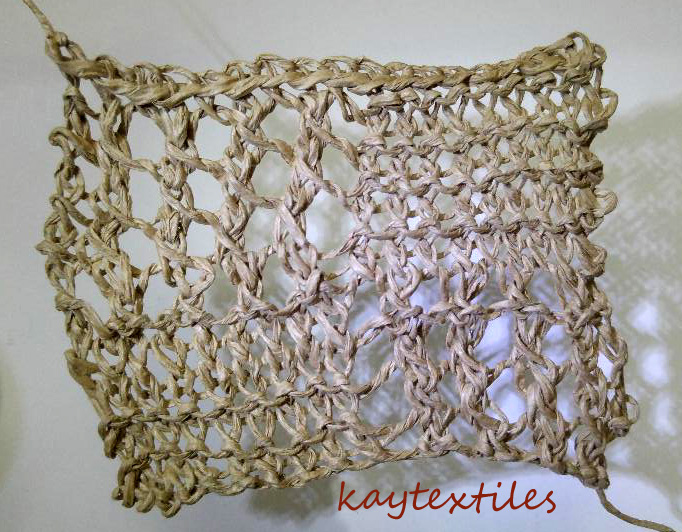From this I made relief surfaces from which to produce rubbings and prints, often changing the scale to add more interest (MM118). I used punch pockets, blue garden twine, string, cardboard and Japanese Washi yarn.
Stitching on punch pockets proved very successful. After the block has been placed on a gelli plate and 'inked', if you then place tissue or thin paper on top of the block you can take interesting prints by just rubbing the tissue, particularly if you also take some of the ink deposited on the punch pocket.
Using multiple relief surfaces and Markal Paintstiks I carefully made rubbings on blue tissue paper. Initially I followed the design and then became freer in my development.
From design work already done in earlier chapters, as I developed the designs I tended to use the thinner papers to take rubbings - teabag, lens tissue, tissue. When I used the gelli plate, which I continued to do for these designs, I could use thicker papers, though thinner papers did also give good results as before. The gelli plate also enabled me to layer up design motifs on a single piece of paper without the necessity to cut and paste. Using a limited palette - blue, ochre and red ensured that different prints would always complement one another. Once again I made use of the fact I could push the relief surface into the gelli plate, lift off the relief surface and then take a print from the plate - like a negative rubbing. It also gave me the option of taking a ghost print from the gelli plate which was often more interesting than the first print.
All this gave me many prints. I include a selection of my favourites, with notation where appropriate.
MM122/3 - acrylic base on tissue with Markal Paintstik rubbing ontop. Notice as the tissue pleats as it is placed on the gelli plate the wonderful marks you get almost by accident.
MM131 - acrylic on blue tissue paper.
MM134 - my favourite!
MM139 - acrylic on lining paper.
MM140 acrylic on 160gsm dark blue Tiziano paper.
MM141 - acrylic on 150gsm Khadi paper.
MM142 - pleated tissue paper and rubbings made. Pleats reversed and more rubbings made.
MM143 - combining designs.
One concern I have is that all the prints are quite busy and when you start putting them together there is no peace/rest in the design. I would probably go back and do some simpler prints to put alongside the prints I have made, perhaps using the motifs on a much larger scale so creating space.
MM144 - relief blocks after the action!


















































